Inside the world of the fantasy form watch
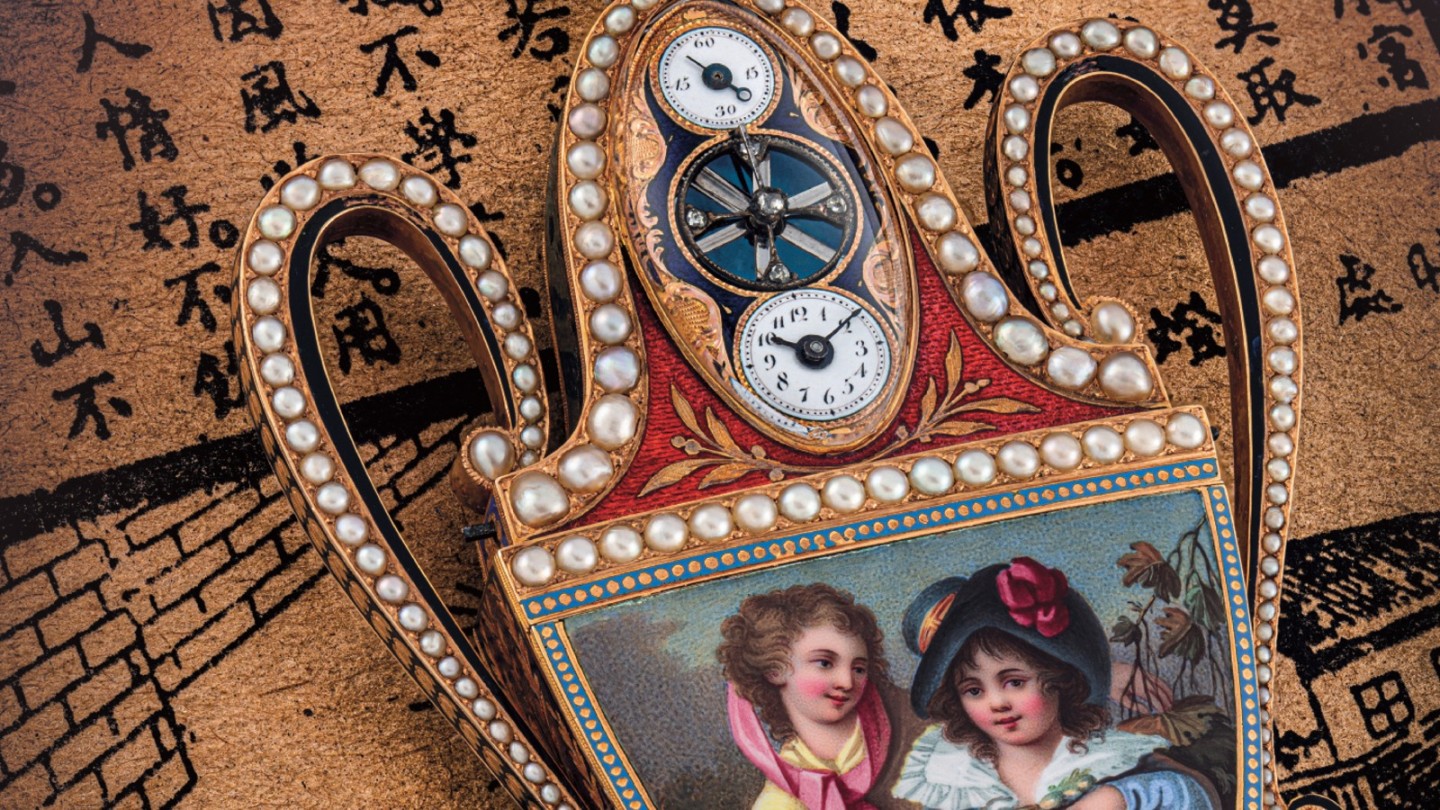
Roula Khalaf, Editor of the FT, selects her favourite stories in this weekly newsletter.
“The early 19th century saw Geneva become a really important city for horology. It was right in the middle of Europe. Watchmakers of that period were incredibly talented, and Geneva was famous for its enamels. Being clever, business-minded people, they decided that they could start making watches to suit different tastes. They were influenced by the fashions of that era and the fashions dictated the forms.”
George Somlo, a dealer in antique and vintage timepieces since 1970, is sketching out the cultural background from which the early-19th-century fashion for curiously shaped watches emerged. Working in a small office above his shop in Burlington Arcade, surrounded by shelves of reference books, Somlo is understated, his demeanour in direct contradiction to the blaze of colour that illuminates the polychrome enamel objects he presents for my inspection.
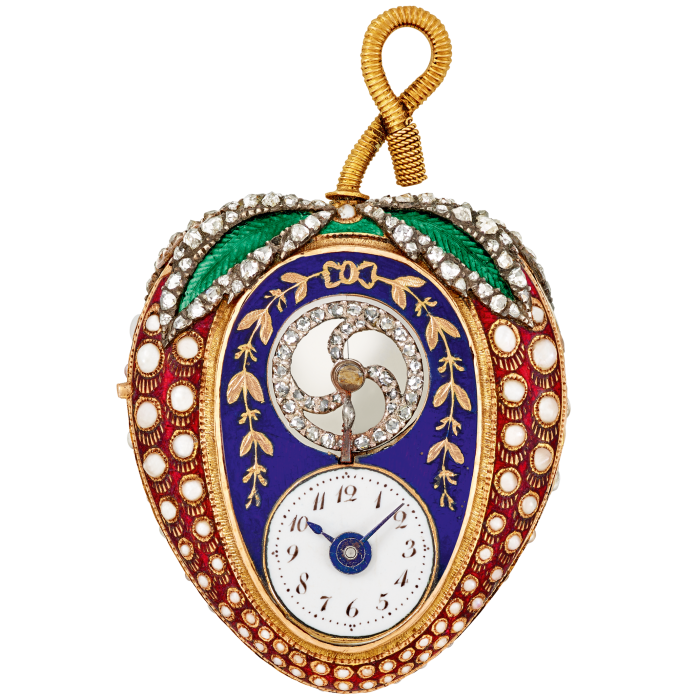
A c1810 strawberry pendant watch in the Patek Philippe Museum
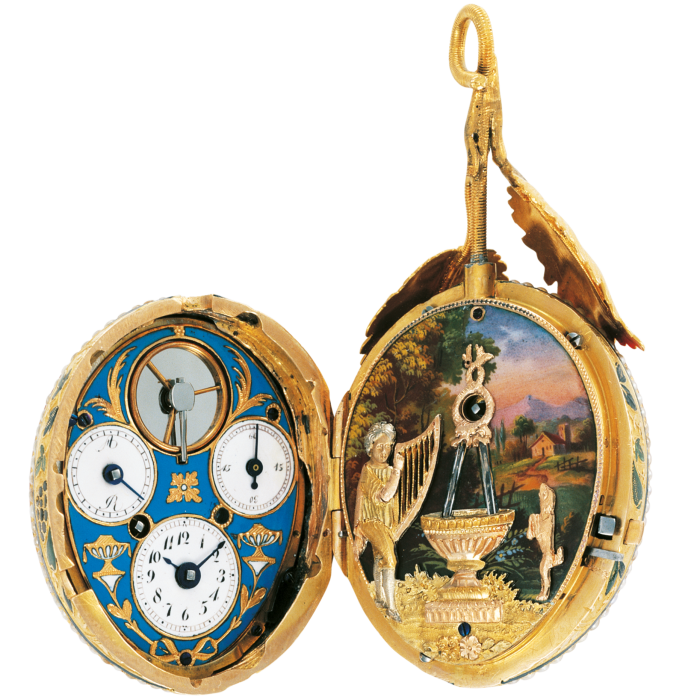
A c1805 melon pendant automaton, attributed to Piguet & Capt, in the Patek Philippe Museum
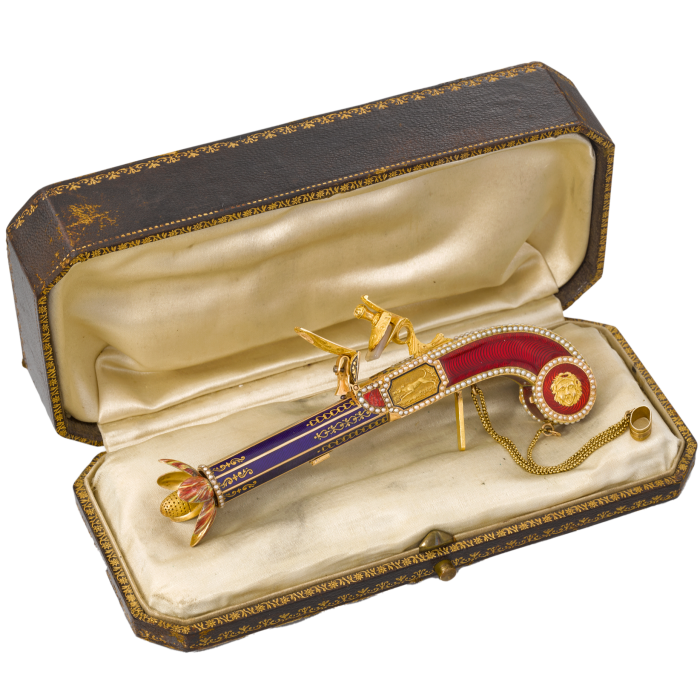
A pistol perfume sprinkler watch, c1805, attributed to Moulinié, Bautte & Cie or JB Garrand, sold at Christie’s for about £317,000
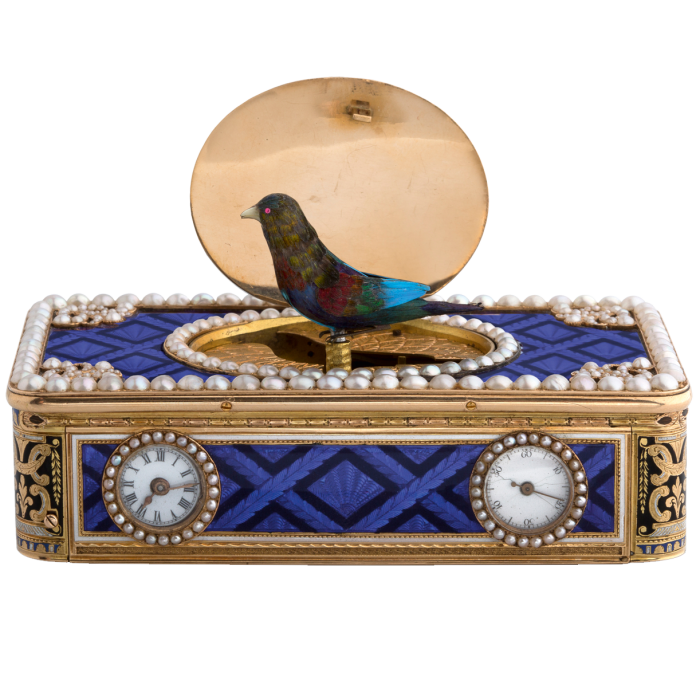
A singing bird watch box, c1800, sold at Aguttes for €328,980
Laid out in a tray, in little suede-lined compartments, are tulips, scarab beetles, strawberries, mandolins, elephants, harps and more, all rendered in gem-bright, richly coloured enamels that dazzle the eye and transport the mind back 200 years to a world where these objects were proudly displayed in the salons of the grand hôtels particuliers of Paris, delighting with their beauty and ingenuity. “It’s a fantasy, something that you dream about,” enthuses Somlo. “You can imagine a watchmaker waking up and thinking, ‘I dreamt of strawberries last night, maybe I’ll make a watch with a strawberry-shaped design.’”
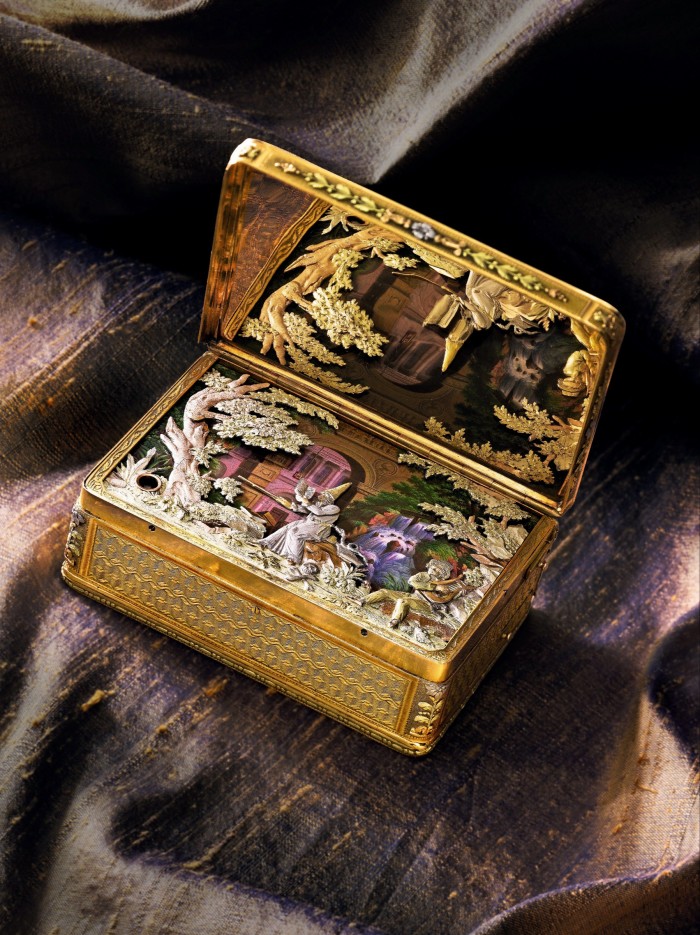
The way in which they tell the time is not immediately apparent, and that is part of the appeal: the petals of the tulip open to reveal a small watch, the scarab’s back slides open, the back of the mandolin swings open on a hinge. Their relative importance and value is denoted by the level of workmanship, the quality of the enamelling and the use of precious stones. The popularity of form watches was at its height before stem-winding was introduced, and in some cases the winding keys alone are works of art. Form watches were much more than mere timekeepers: totems of a sophisticated leisure culture, they were conceived to be a conversation piece.
WHERE TO BUY
Aguttes aguttes.com
Artcurial artcurial.com
Christie’s christies.com
Dr Crott Auctioneers uhren-muser.de
Ineichen Auctioneers ineichen.com
Pieces of Time antique-watch.com
Somlo London somlo.com
Sotheby’s sothebys.com
WHAT TO READ
The Camerer Cuss Book of Antique Watches by TP Camerer Cuss (ACC Art Books)
Montres de fantaisie: Watches of fantasy 1790-1850 by Oswaldo Patrizzi, Fabienne Xavière Sturm (Tribune éditions)
Patek Philippe Museum: Treasures from the Antique Collection by Peter Friess (TeNeues)
The Sandberg Watch Collection by Terence Camerer Cuss, Osvaldo Patrizzi and Claude Mercier (Antiquorum)
Technique and History of the Swiss Watch by Eugene Jaquet and Alfred Chapuis (Spring Books)
WHERE TO SEE
Beyer Clock and Watch Museum beyer-ch.com
Cité du Temps citedutemps.com
L.U.Ceum, traces of Time, chopard.com
Musée International d’Horlogerie chaux-de-fonds.ch/musees/mih
Patek Philippe Museum patek.com
Watch Museum of Le Locle mhl-monts.ch
“The only thing they have in common with a watch is that they tell the time, but there is so much more to them in terms of artistic appeal,” says Belgian collector Luc Van Cauwenbergh. A lifelong, second-generation watch collector, he is always ready to do a deal. “Many years ago, I came into one of the small restaurants around the Drouot auction house in Paris, which is frequented by the commissaires-priseurs, dealers and collectors. A local dealer pulled a watch out of his pocket in the shape of a gold-enamelled hat. I was thrilled by the sight of it and acquired it after a short discussion. Many years later I was very pleased when I opened the recent publication of the Patek Philippe Museum, Treasures from the Antique Collection, in which a nearly identical form watch was displayed. These are only two known examples of this form watch.”
The appeal of form watches was truly global, as Paris-based auctioneer Geoffroy Ader explains. “There were two big export markets: the court of the Ottoman Sultan, which had a fondness for diamonds, and the Chinese emperor. For the Chinese market, watches were made in pairs, so they were the mirror image of each other.” And it is the form watches made for these luxury export markets that are among the most sought-after today.
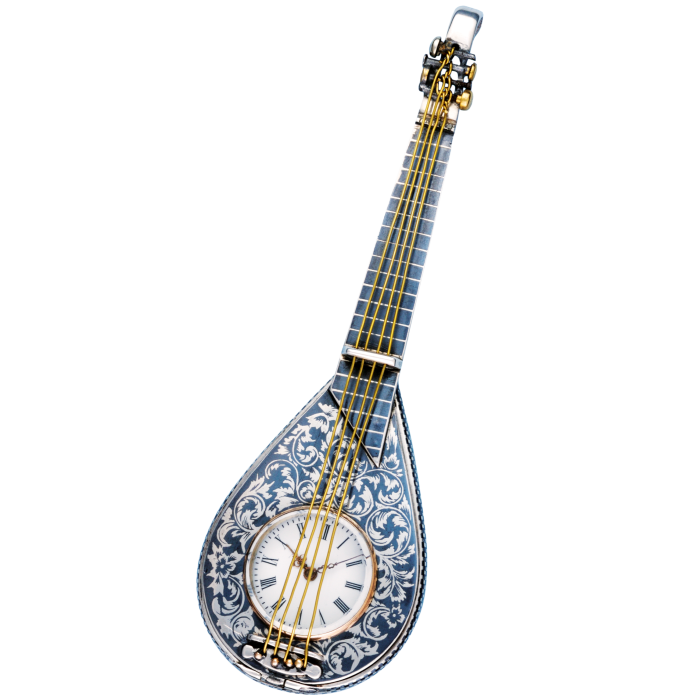
Lute, c1880, sold at antique-watch.com for £2,300
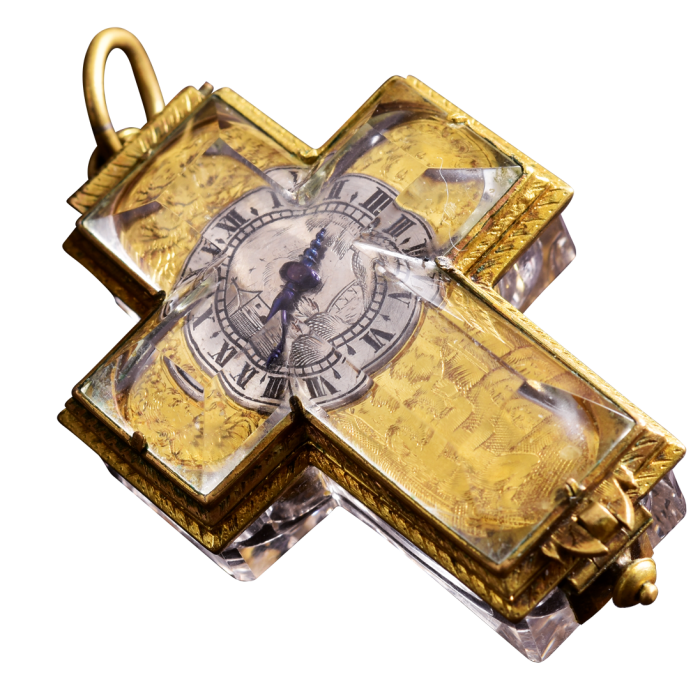
Crucifix watch, c1630, £85,000, somlo.com
These pieces destined for the Qing-dynasty emperor were the ne plus ultra of Geneva craftsmanship and although many were exported unsigned, there were only a few houses capable of making pieces of such quality: Isaac Daniel Piguet and Henry Capt, who collaborated on form watches between 1802 and 1811; and Jean-François Bautte, a visit to whose shop, where the stairs were scented with eau de cologne and the logs for the fire were cut into decorative shapes, was a must in early-19th-century Geneva.
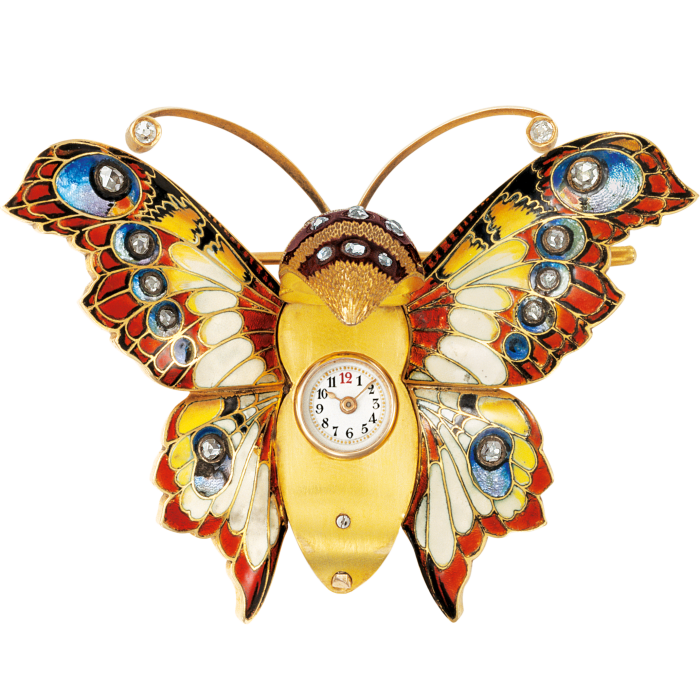
A c1890 butterfly brooch in the Patek Philippe Museum
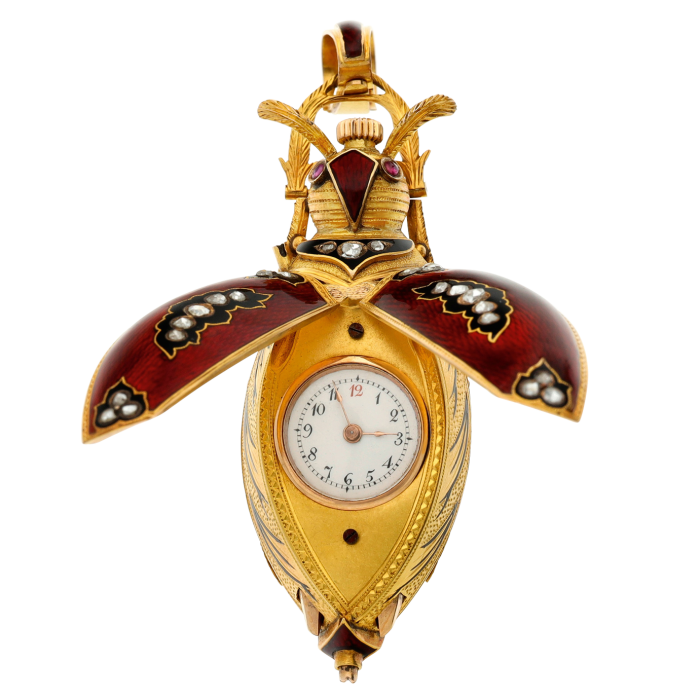
Beetle brooch, c1880, £14,000, antique-watch.com
Among the most celebrated were richly chased and enamelled amphorae that in addition to telling the time were perfume flasks that played music; and miniature gold and enamel pistols that “fired” jets of perfume and concealed a tiny clock in the grip. In May 2021 Christie’s sold a Piguet & Capt-attributed amphora for HK$12.25mn (about £1.29mn) and in November 2022 a perfume pistol linked to Bautte for SFr352,800 (about £317,000).
Collecting form watches, however, need not be unaffordable. A strawberry or tulip, says Somlo, will cost you between £7,000 and £10,000, while £15,000 will get you a mandolin – the sort of money you will spend on a nice, pre-owned steel Rolex sports model. But such comparisons are nearly meaningless – after all you can’t go diving with your mandolin form watch, while your Submariner will not have borne witness to two centuries of history.
Comments